-
 Bitcoin
Bitcoin $105,278.9859
4.61% -
 Ethereum
Ethereum $2,414.7741
8.20% -
 Tether USDt
Tether USDt $1.0007
0.05% -
 XRP
XRP $2.1600
7.53% -
 BNB
BNB $639.5433
3.75% -
 Solana
Solana $144.3830
9.37% -
 USDC
USDC $1.0001
0.02% -
 TRON
TRON $0.2742
3.84% -
 Dogecoin
Dogecoin $0.1640
8.57% -
 Cardano
Cardano $0.5811
7.49% -
 Hyperliquid
Hyperliquid $37.2466
5.28% -
 Sui
Sui $2.8243
14.84% -
 Bitcoin Cash
Bitcoin Cash $460.8816
2.22% -
 Chainlink
Chainlink $12.9580
11.75% -
 UNUS SED LEO
UNUS SED LEO $9.1359
1.23% -
 Avalanche
Avalanche $18.2302
10.30% -
 Stellar
Stellar $0.2463
7.80% -
 Toncoin
Toncoin $2.9151
7.18% -
 Shiba Inu
Shiba Inu $0.0...01163
9.79% -
 Hedera
Hedera $0.1532
14.01% -
 Litecoin
Litecoin $85.3310
6.29% -
 Monero
Monero $308.8215
2.90% -
 Ethena USDe
Ethena USDe $1.0007
0.03% -
 Polkadot
Polkadot $3.4259
9.42% -
 Dai
Dai $1.0002
0.01% -
 Bitget Token
Bitget Token $4.1742
3.19% -
 Uniswap
Uniswap $6.8272
8.53% -
 Pepe
Pepe $0.0...09939
12.29% -
 Pi
Pi $0.5358
6.03% -
 Aave
Aave $257.3092
12.83%
What does the adhesion of DIF and DEA lines mean? How will the market evolve in the future?
When DIF and DEA lines adhere in MACD, it signals low momentum, often seen during market indecision or consolidation, especially in crypto markets.
Jun 24, 2025 at 01:36 pm
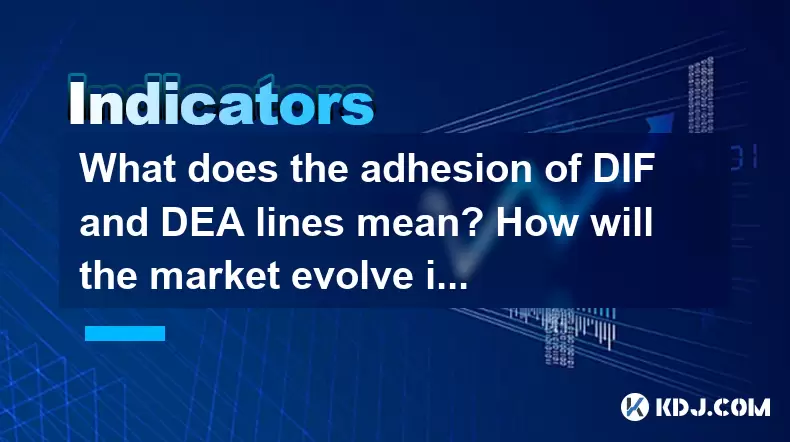
What Is the Adhesion of DIF and DEA Lines?
In technical analysis, particularly within the MACD (Moving Average Convergence Divergence) indicator, the DIF and DEA lines are critical components. The DIF line is calculated as the difference between the 12-day and 26-day Exponential Moving Averages (EMAs) of price data. The DEA line, also known as the signal line, is a 9-day EMA of the DIF line.
When the DIF and DEA lines adhere closely to each other, it indicates a period of low momentum in the market. This phenomenon often occurs when there is little directional movement or when traders are hesitant to take strong positions. In such cases, the histogram bars that represent the difference between these two lines shrink significantly.
Why Does Adhesion Occur Between DIF and DEA?
The adhesion between DIF and DEA lines typically occurs during periods of market consolidation or sideways movement. Since the DEA line is derived from the DIF line itself, any stabilization in the DIF causes the DEA to converge with it. This situation suggests that the short-term moving average is not diverging strongly from the long-term moving average.
This can happen for several reasons:
- Market indecision: Traders are waiting for clearer signals before entering new positions.
- Volume decline: Reduced trading activity leads to smaller price swings.
- Absence of catalysts: No major news or events influencing asset prices.
Understanding this context helps traders interpret whether the market is preparing for a breakout or entering a prolonged consolidation phase.
How to Interpret DIF and DEA Line Adhesion in Cryptocurrency Markets
In cryptocurrency markets, where volatility is high and trends can reverse rapidly, the adhesion of DIF and DEA lines can provide early clues about potential trend reversals or continuations.
For example:
- If the DIF and DEA lines stick together after a sharp downtrend, it may indicate that selling pressure is easing.
- Conversely, if they remain adhered after an uptrend, it might suggest that buying momentum is weakening.
Traders should pay attention to the volume and candlestick patterns alongside MACD behavior to confirm the strength of a potential move.
Practical Steps to Analyze DIF and DEA Line Behavior
To effectively analyze the relationship between DIF and DEA, follow these steps:
- Open a charting platform that supports MACD indicators (e.g., TradingView, Binance, or CoinMarketCap).
- Enable the MACD indicator on the chart of your chosen cryptocurrency.
- Identify the DIF and DEA lines — usually colored differently (often red and blue).
- Observe their convergence or divergence over multiple timeframes (e.g., 1-hour, 4-hour, daily).
- Check the histogram to see if the gap between the lines is narrowing or expanding.
- Cross-reference with volume indicators like OBV (On-Balance Volume) or simply spot unusual volume spikes.
These observations help traders anticipate possible breakouts or breakdowns even before they occur.
Implications of DIF and DEA Line Adhesion on Price Action
When the DIF and DEA lines adhere, it reflects a balance between buyers and sellers. However, this equilibrium rarely lasts long in crypto markets. Eventually, one side gains dominance, leading to a sharp price movement.
Key implications include:
- Potential breakout scenarios: A sudden divergence following adhesion can signal a powerful trend.
- False signals: Sometimes, the lines separate briefly before returning to adhesion, causing misleading signals.
- Timeframe sensitivity: Shorter timeframes may show more frequent adhesions due to increased noise.
By monitoring how quickly the lines separate after sticking together, traders can estimate the strength of the upcoming trend.
Frequently Asked Questions
Q: Can DIF and DEA line adhesion be used alone for trading decisions?
While the adhesion of DIF and DEA lines offers valuable insights, relying solely on this signal can lead to false trades. It’s best used in conjunction with other tools like RSI, support/resistance levels, and volume analysis.
Q: What does it mean if DIF and DEA lines stay stuck for a long time?
Prolonged adhesion often indicates a strong consolidation phase. It may precede a significant move once the price breaks out of the range, but patience and confirmation are crucial before taking action.
Q: Are there specific cryptocurrencies where DIF and DEA line adhesion works better?
This pattern applies broadly across all assets, including major cryptocurrencies like Bitcoin, Ethereum, and altcoins. However, higher liquidity coins tend to produce more reliable signals due to stronger participation and less manipulation.
Q: How do I differentiate between normal convergence and adhesion?
Normal convergence involves a gradual approach between DIF and DEA, while adhesion refers to a near-overlap for an extended period. The histogram shrinking close to zero visually confirms this state.
Disclaimer:info@kdj.com
The information provided is not trading advice. kdj.com does not assume any responsibility for any investments made based on the information provided in this article. Cryptocurrencies are highly volatile and it is highly recommended that you invest with caution after thorough research!
If you believe that the content used on this website infringes your copyright, please contact us immediately (info@kdj.com) and we will delete it promptly.
- Bitcoin Holdings Strategy: Riding the $BTC Wave Like a Wall Street Pro
- 2025-06-24 18:25:12
- Crypto Market Check-in: A16z's Mid-Year Indicators and the Road Ahead
- 2025-06-24 18:25:12
- Crypto Funds See $1.2B Weekly Inflows: Confidence Amidst the Chaos
- 2025-06-24 18:30:13
- Roman Coin Treasure: Centuries Hidden, Finally Revealed!
- 2025-06-24 18:30:13
- Celestia Under Fire: Navigating the $100M FUD Storm
- 2025-06-24 16:45:12
- XLM Price, Bitcoin Solaris, and Returns Prediction: Navigating the Crypto Landscape
- 2025-06-24 16:25:13
Related knowledge
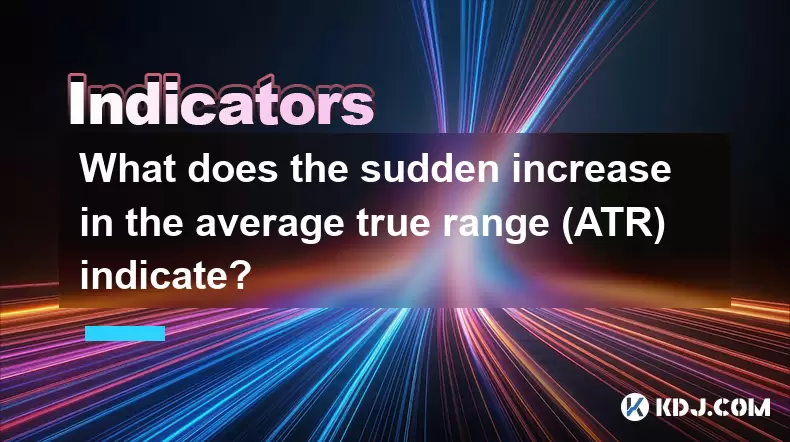
What does the sudden increase in the average true range (ATR) indicate?
Jun 24,2025 at 06:42pm
Understanding the Average True Range (ATR) in Cryptocurrency TradingThe Average True Range (ATR) is a technical indicator used by traders to measure market volatility. In the context of cryptocurrency, where prices can swing dramatically within short periods, ATR becomes an essential tool for assessing potential price movements. The ATR does not indicat...
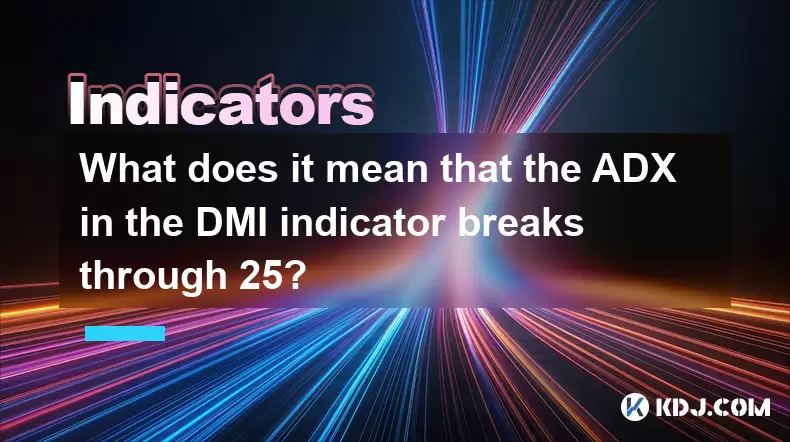
What does it mean that the ADX in the DMI indicator breaks through 25?
Jun 24,2025 at 06:21pm
Understanding the DMI Indicator and Its ComponentsThe Directional Movement Index (DMI) is a technical analysis tool used to identify the strength and direction of a trend in cryptocurrency markets. The indicator consists of two primary lines: the Positive Directional Indicator (+DI) and the Negative Directional Indicator (-DI). These lines help traders ...
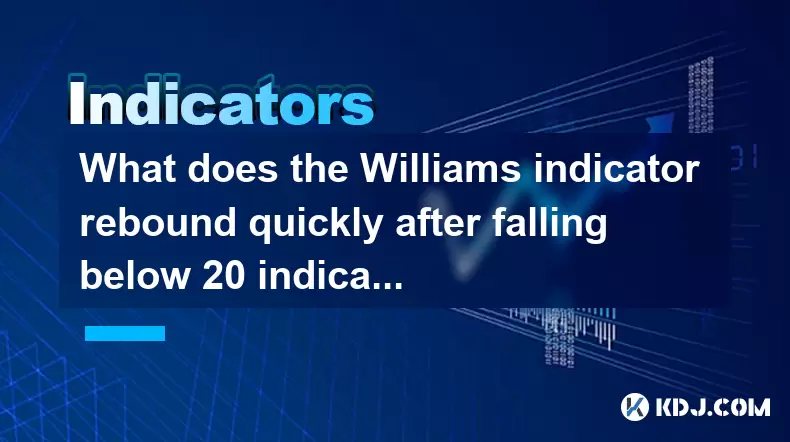
What does the Williams indicator rebound quickly after falling below 20 indicate?
Jun 24,2025 at 04:49pm
Understanding the Williams %R IndicatorThe Williams %R indicator, also known as Williams Percent Range, is a momentum oscillator used in technical analysis to identify overbought and oversold conditions in financial markets, including cryptocurrencies. It was developed by Larry Williams and typically operates on a scale from 0 to -100. In the context of...
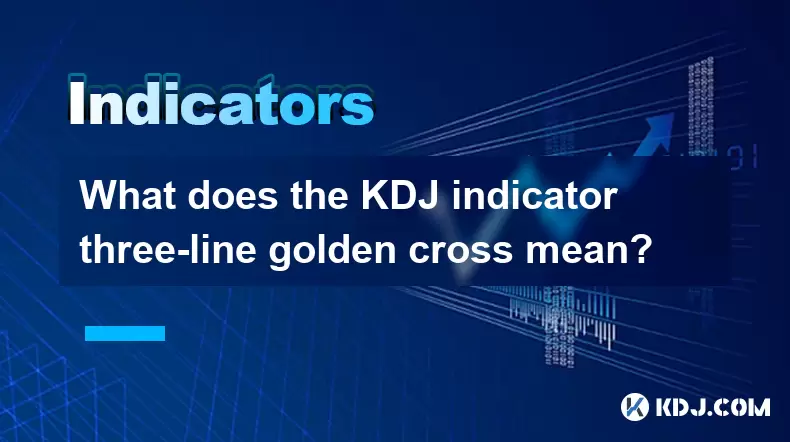
What does the KDJ indicator three-line golden cross mean?
Jun 24,2025 at 05:28pm
Understanding the KDJ Indicator in Cryptocurrency TradingThe KDJ indicator is a technical analysis tool widely used in cryptocurrency trading to identify potential buy and sell signals. It combines elements of two other indicators: the Stochastic Oscillator and the J line, which acts as a signal line. The KDJ consists of three lines — K, D, and J — each...
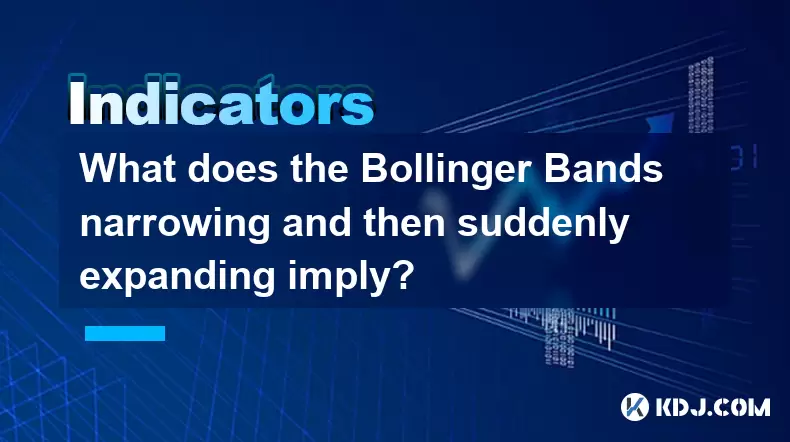
What does the Bollinger Bands narrowing and then suddenly expanding imply?
Jun 24,2025 at 05:56pm
Understanding Bollinger Bands in Cryptocurrency TradingBollinger Bands, a popular technical analysis tool, are widely used in cryptocurrency trading to assess price volatility and potential trend reversals. The indicator consists of three lines: a Simple Moving Average (SMA) in the middle, typically set at 20 periods, with two outer bands that represent...
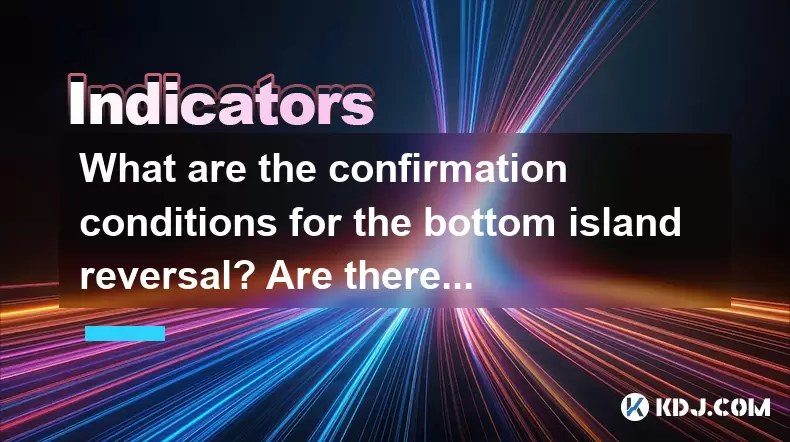
What are the confirmation conditions for the bottom island reversal? Are there many false signals?
Jun 24,2025 at 04:56pm
Understanding the Bottom Island Reversal PatternThe bottom island reversal is a rare but significant candlestick pattern that indicates a potential shift from a downtrend to an uptrend. It typically forms when there's a gap down followed by a gap up, leaving a 'blank' space on the chart — the island — which is isolated from the surrounding price action....

What does the sudden increase in the average true range (ATR) indicate?
Jun 24,2025 at 06:42pm
Understanding the Average True Range (ATR) in Cryptocurrency TradingThe Average True Range (ATR) is a technical indicator used by traders to measure market volatility. In the context of cryptocurrency, where prices can swing dramatically within short periods, ATR becomes an essential tool for assessing potential price movements. The ATR does not indicat...

What does it mean that the ADX in the DMI indicator breaks through 25?
Jun 24,2025 at 06:21pm
Understanding the DMI Indicator and Its ComponentsThe Directional Movement Index (DMI) is a technical analysis tool used to identify the strength and direction of a trend in cryptocurrency markets. The indicator consists of two primary lines: the Positive Directional Indicator (+DI) and the Negative Directional Indicator (-DI). These lines help traders ...

What does the Williams indicator rebound quickly after falling below 20 indicate?
Jun 24,2025 at 04:49pm
Understanding the Williams %R IndicatorThe Williams %R indicator, also known as Williams Percent Range, is a momentum oscillator used in technical analysis to identify overbought and oversold conditions in financial markets, including cryptocurrencies. It was developed by Larry Williams and typically operates on a scale from 0 to -100. In the context of...

What does the KDJ indicator three-line golden cross mean?
Jun 24,2025 at 05:28pm
Understanding the KDJ Indicator in Cryptocurrency TradingThe KDJ indicator is a technical analysis tool widely used in cryptocurrency trading to identify potential buy and sell signals. It combines elements of two other indicators: the Stochastic Oscillator and the J line, which acts as a signal line. The KDJ consists of three lines — K, D, and J — each...

What does the Bollinger Bands narrowing and then suddenly expanding imply?
Jun 24,2025 at 05:56pm
Understanding Bollinger Bands in Cryptocurrency TradingBollinger Bands, a popular technical analysis tool, are widely used in cryptocurrency trading to assess price volatility and potential trend reversals. The indicator consists of three lines: a Simple Moving Average (SMA) in the middle, typically set at 20 periods, with two outer bands that represent...

What are the confirmation conditions for the bottom island reversal? Are there many false signals?
Jun 24,2025 at 04:56pm
Understanding the Bottom Island Reversal PatternThe bottom island reversal is a rare but significant candlestick pattern that indicates a potential shift from a downtrend to an uptrend. It typically forms when there's a gap down followed by a gap up, leaving a 'blank' space on the chart — the island — which is isolated from the surrounding price action....
See all articles
























































































